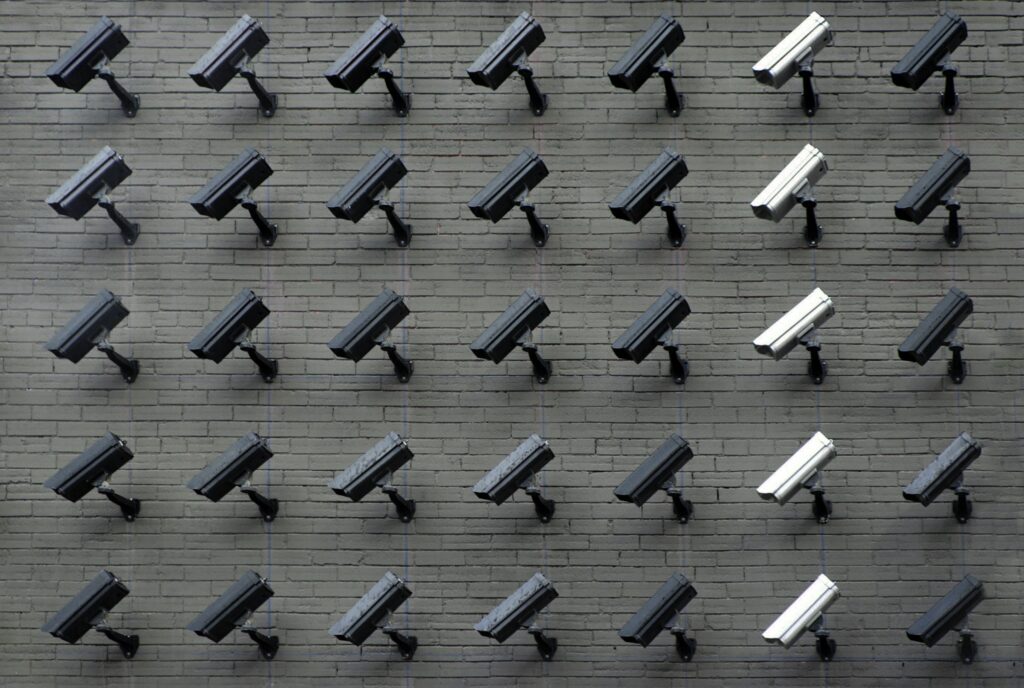The Real Cost of Overlooked Privacy
Most people think privacy is a background setting—something that only matters when there’s a breach or a news story. But in 2024, every scroll, click, and voice command is part of someone else’s dataset. The cost of convenience is constant surveillance, and it’s happening quietly.
Everyday platforms—YouTube, Instagram, TikTok—are tracking viewing habits, facial patterns, and location history. Not to spy in the traditional sense, but to build profiles that are sold or fed into ever-smarter algorithms. The reason? Precision. More targeted ads, more engagement, more money. It’s not inherently evil, but it is invasive. And it rarely stops with the data you think you’re giving.
Even small habits expose more than you’d guess. Filming with geotags on. Using default cloud backup settings. Commenting or liking content related to sensitive topics. Over time, these add up to a sharply defined version of you—and once it’s out there, you can’t pull it back.
Vloggers, in particular, are both data creators and data targets. Being online all the time means you’re constantly offering up your routines, preferences, even family members. If you’re not actively managing privacy, you’re handing out keys to your digital front door. It’s not about paranoia. It’s about awareness. Protect your content, protect your life.
Data Privacy for Vloggers: Stay Sharp in 2024
Online visibility comes with its own risks, and creators need to be smarter with privacy than ever. Start with data minimization. Only share what’s absolutely necessary—whether it’s with platforms, brand partners, or your audience. Oversharing makes you vulnerable.
Next up, encryption. Use it for everything: messages, emails, even backups. Assume that anything unencrypted is up for grabs. Plenty of affordable tools out there now make it easy to lock things down.
And don’t treat two-factor authentication as optional. It’s your baseline. Not something you turn on after a scare. Use it across every account—from your monetization platform to your editing software. One weak password is all it takes to bring everything down.
Vlogging in 2024 isn’t just about content. It’s about guarding the digital doors that keep your work—and your life—safe.
Digital Privacy Tools: What Actually Helps
Let’s keep it simple. If you’re serious about privacy, not all tools are built the same. Here’s what works, what doesn’t, and how to cut through the noise.
VPNs get thrown around a lot. They can mask your IP and encrypt traffic between you and the VPN server. That’s useful for using public Wi-Fi or accessing geo-blocked content. But VPNs don’t make you anonymous. They don’t block trackers, stop malware, or protect you once you’re logged in to your personal accounts. Choose one with a no-logs policy, strong encryption, and a reputation that’s not built on aggressive ads.
Secure browsers are your next line of defense. Brave is a good middle ground—fast and blocks trackers by default. Firefox is open-source, customizable, and focused on privacy if you tweak the settings. Tor takes it further, routing your traffic through multiple servers to hide your identity—but it’s slow, and some websites won’t load. Regular users can stick to Brave or Firefox. Tor is better for high-risk situations.
Search engines matter more than most think. Google logs everything. Try DuckDuckGo or Startpage to avoid being followed every time you search for something random. They don’t track you, don’t build profiles, and don’t sandpaper your curiosity down to an algorithm.
Password managers solve a boring but essential problem. Writing passwords in your notes app or on paper is a security time bomb. Use a manager like Bitwarden or 1Password. They store complex passwords, auto-fill forms, and keep your logins behind one master password. Just make sure your master password is long and unique.
Lastly, tracker blockers help your browser stay silent. Extensions like uBlock Origin, Privacy Badger, and Ghostery block scripts, cookies, and fingerprinting attempts. It’s not about ad-free browsing. It’s about not letting every website ping your data back to thirty ad networks. It makes the web quieter and safer.
No tool is bulletproof, but stacking even a few of these helps you blend in, not stand out.
Threats That Seem Familiar But Are Evolving
Cybersecurity in 2024 is not just about new threats. Many of the most dangerous risks are familiar ones—updated, refined, and harder to detect. Let’s break down three persistent threats that continue to top the list.
Phishing: Still the Most Effective Attack
Phishing remains the number one entry point for cyberattacks, and attackers are only getting better at it:
- More convincing than ever: Fake emails, messages, and login pages now closely mimic legitimate sources.
- Targeted approaches: Spear phishing is on the rise, where attackers tailor messages based on your industry, job title, or recent online behavior.
- Beyond email: Phishing attempts now come in via SMS, messaging apps, and social media.
Stay sharp:
- Don’t click unknown links, even if they look legitimate.
- Always verify requests for sensitive information through a second channel.
Malicious Browser Extensions and Mobile Apps
What seems like a helpful tool could be a gateway for data theft.
- Browser extensions can quietly log keystrokes, redirect searches, or inject ads.
- Mobile apps, especially ones from outside trusted app stores, may request unnecessary permissions.
- Updates may introduce threats even after an app is installed and trusted.
Tips to protect yourself:
- Only download from official app stores and verified developers.
- Review permissions and user reviews before installing.
- Audit browser extensions regularly and remove those you don’t use.
Free Software That Isn’t Really Free
That helpful free utility? It might be costing you your privacy.
- Many “free” programs are monetized through bundled adware or data harvesting.
- Installed software may track your behavior across devices.
- Worse, some contain trojan components that activate post-installation.
Best practices:
- Research software sources before downloading.
- Choose reputable open source options or paid tools with clear terms.
- Use sandbox environments for unverified downloads.
These classic attack methods are still effective because they evolve with technology and user behavior. Being aware of how these familiar threats are changing is key to staying secure.
Privacy should not be an afterthought, especially when your entire vlogging setup might depend on mobile devices and cloud integration. Start with your phone. On both iOS and Android, head into settings and disable location access for apps that don’t need it. Limit background data access. Turn off microphone and camera permissions for anything that doesn’t absolutely require them. Most phones also let you restrict ad tracking—do it.
Apps are another weak link. Some are constantly pinging servers, scraping contact lists, or worse. Audit your installed apps every couple of months. If you haven’t used it in 30 days, consider deleting it. When you do install something new, don’t just tap ‘Allow All.’ Read what it’s asking for.
Then there’s your Wi-Fi. If your network still uses the default password or an outdated router, you’ve got a welcome mat down for digital intruders. Upgrade the firmware on your router. Use WPA3 encryption if available. Don’t let your smart fridge or filler devices open up attack paths to devices you actually care about.
For more detailed tips on securing your connected environment, check out How to Set Up a Secure Smart Home Network.
Digital Hygiene on the Go: What Creators Shouldn’t Ignore
Public Wi-Fi is a trap if you’re not careful. Sure, it’s handy for uploading a vlog at the airport or responding to comments at a café, but it’s also a goldmine for digital eavesdroppers. Always use a VPN on public networks. Avoid logging into banking or anything sensitive without protection. If you’re syncing footage to cloud tools over hotel Wi-Fi, double-check your encryption and privacy settings.
Then there’s the oversharing problem. Posting a behind-the-scenes snap with your flight number, license plate, or home workspace background? It might seem harmless, but it’s all data someone can use. Doxxing and digital stalking start with breadcrumbs. Be specific in your storytelling, not your location.
Finally, let’s talk backups. Gear fails. Accidents happen. Ransomware is real. Whether you’re a daily uploader or a once-a-week creator, make backup protocols part of your workflow. That means local physical copies and secure cloud storage. One stolen laptop shouldn’t cost you your archive.
You don’t need to be paranoid, but you do need to be prepared. Staying visible online starts with staying secure.
Privacy isn’t just a tech geek’s issue anymore. If you’re online—and every vlogger is—you’ve got a stake in this. Being “just a creator” doesn’t shield you from data grabs, tracking, or bad actors. Whether you’re sharing travel diaries or deep dives on skincare routines, you’re producing valuable digital breadcrumbs. That means you need to treat privacy like part of the job.
Start simple. Use a password manager. Turn on two-factor authentication. Check your app permissions. Get a VPN if you’re posting from public Wi-Fi. Pick one small step and lock it in. From there, layer on better habits as you go. Privacy doesn’t demand paranoia—it just takes awareness.
The threats aren’t static. Tools evolve, but so do risks. Algorithms get smarter. Scams get sneakier. Oversharing in a vlog can go sideways fast if you’re not careful. The fix? Stay alert. Do a privacy checkup now and then. Ask if what you’re posting could be used against you or your audience. In 2024, safe vlogging means smart vlogging.



 Dorisia is a digital innovation writer at flpsymbolcity, known for turning complex technology symbols, codes, and digital tools into simple resources anyone can use. With a deep passion for online communication systems and evolving tech emojis, she helps users understand how symbols shape modern digital conversations.
Dorisia is a digital innovation writer at flpsymbolcity, known for turning complex technology symbols, codes, and digital tools into simple resources anyone can use. With a deep passion for online communication systems and evolving tech emojis, she helps users understand how symbols shape modern digital conversations.

